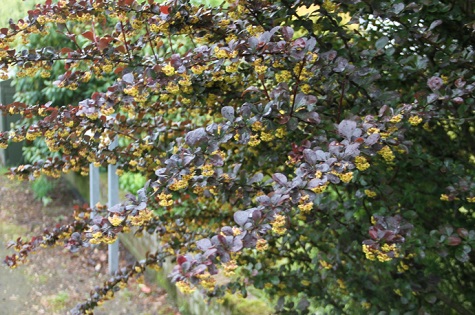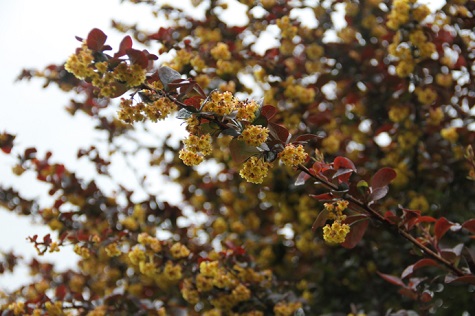This month's Plant Focus, is another one of my favourites.
I first came across this shrub when working in Kings Heath Park, Birmingham. It was a fairly new variety back then and has now stood the test of time and is now a popular choice in many gardens.
Berberis thunbergii 'Atropurpurea', commonly known as the Purple Japanese Barberry or Red Barberry, is a deciduous shrub that belongs to the Berberidaceae family. It is a popular ornamental plant prized for its attractive foliage and compact growth habit.

Key features and characteristics of Berberis thunbergii 'Atropurpurea':
Appearance: This cultivar of Berberis thunbergii typically grows to a height of 3 to 6 feet (0.9 to 1.8 meters) with a similar spread. It has a dense, rounded form and produces numerous branches. The leaves are oval-shaped, approximately 1 inch long, and emerge as a deep purple-red colour in spring. As summer progresses, the foliage deepens into a rich, dark purple shade, providing a striking contrast in the garden.
Thorns: One notable feature of Berberis thunbergii 'Atropurpurea' is its sharp thorns, which are commonly found along the branches. These thorns can be a deterrent for animals or intruders, making it a suitable plant for security purposes.

Flowers: In late spring to early summer, this barberry cultivar produces small, pale yellow flowers that are arranged in clusters. While the flowers are not particularly showy, they give way to attractive red berries in late summer or early fall. These berries can persist into winter, adding another layer of visual interest to the shrub.

Autumn colour: As autumn approaches, the leaves of Berberis thunbergii 'Atropurpurea' transition to shades of red, orange, or yellow, offering a final burst of vibrant color before dropping in winter.
Growing conditions: Purple Japanese Barberry is known for its adaptability to a wide range of growing conditions. It thrives in full sun to partial shade and prefers well-draining soil. It is relatively drought-tolerant once established, but regular watering during dry periods can help maintain its vigour. This shrub is also known for its cold hardiness, making it suitable for various regions.
Landscape use: Due to its striking foliage and compact size, Berberis thunbergii 'Atropurpurea' is commonly used in gardens and landscapes as an accent plant, in hedges or borders, or as a foundation shrub. Its dense growth habit also makes it effective as a barrier or privacy screen when planted in mass.
It's worth noting that while Berberis thunbergii 'Atropurpurea' is a popular garden plant, it can also be considered invasive in some regions. It is advisable to check with local authorities or plant professionals to ensure it is suitable for your area and to prevent it from spreading into natural habitats.
This shrub can be planted all year round if sold as a containerised plant with costs ranging from £10- £30 depending on pot size or size of plant.